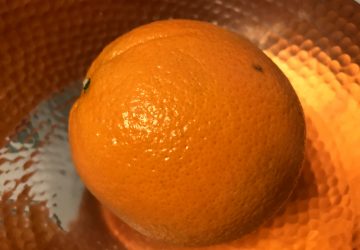
Condiment: Pass the Ketchup and Mustard
It is estimated that in the United States, almost 20 billion hot dogs and 50 billion hamburgers are consumed per year. There is not an exact estimate, but I think we could safely assume that a good portion of those mind-boggling numbers of junk food were paired with some favorite condiments. Condiment is a general word that basically refers to anything flavorful that’s used to season food. It was first used in the 1400s in English and comes from the Latin condire, which meant “to pickle” or “to preserve”. French turned the word into condiment which then fed into English. I don’t typically think of salt, pepper, or the contents of my spice cabinet as a condiment, but by this definition, it could apply. Some of the most popular American condiments are ketchup and mustard.

An assumption might be that ketchup was an American invention, since we consume so much of it, but the original word referred to a Chinese (or maybe another Asian origin) sauce, and came from the the Chinese/Asian pronunciation of the sauce name, ke-chiap. Original ketchup was likely more of a fish sauce (mmm…fish dogs/burgers…). The recipes were pretty variable even after the word entered English, including ingredients such as walnuts, oysters, anchovies, or mushrooms. Tomato ketchup did not become the most popular choice until the late 1800s. F. & J. Heinz launched their version of ketchup in 1876, and today they are the market leader in the USA and U.K (60% and 82% of the market respectively). Hunt’s has the next biggest share, but if you have specialized cravings for other varieties or flavors of ketchup, never fear!
You will find a diverse array of options to choose from at your local grocery store. You may be in the mood for “Fancy” ketchup, if you are the more sophisticated type, which has a higher concentration of tomato solid than other ketchup grades. Or you may want one with jalapeno flavor or sriracha. Or maybe you just need it as a fake blood prop in your next play. At one point in the past, you would have been able to obtain purple, green,and a rainbow of other colored ketchups for your enjoyment. Unfortunately, those were discontinued by 2006. I guess people didn’t love green and purple hot dogs?At least they no longer included marine ingredients.
All ketchup eaters can probably also relate to the annoying issue of leaving a decent remainder of the delicious sticky substance in the container as it nears the end of its use. An engineer at MIT has recently found a scientific solution to this problem, which provides the composition for packaging for multiple condiments with high viscosity levels (thick, sticky liquids) that allows for easier removal of the last remnants. You can read more here: MIT Engineer-Ketchup Bottle. It’s pretty obvious, despite added complications it can bring, ketchup has taken the world by storm. It’s sister (brother/aunt/mother?) condiment, mustard, has done so as well.
Mustard, while paired perfectly with ketchup, has a very different origin story. It comes from the word “must” from the Latin mustum, which referred to unfermented grape juice. Must could be applied to any crushed fruit juice that contained the seeds,skins, or other elements of the fruit. Must was a common food product in the ancient world that was central to the process of winemaking. Mustard was originally made by mixing the mustard seeds with the must (grape juice) by the Romans. Dijon, France became a recognized mustard center by the 13th century as this process spread. The seeds originally came from India and were first cultivated by the Indus Valley Civilization. The first use of mustard as a hot dog condiment was in 1904, as a showcase for French’s mustard (sound familiar?) by the R.T. French Company at the St. Louis World’s fair. Today, the French’s brand is owned by McCormick & Company. Like our exploration of orange in a previous post, mustard has also come to mean a color as well as an edible condiment. Perhaps we just like to identify our surroundings based on what we eat.
So just remember, the next time you go to bite into a juicy burger or hot dog, keep in mind you are experiencing a mryiad of cultural history in your mouth, combining American, Chinese/East Asian, Indian, and Roman elements (just to name a few) in that single bite. Or you can try out this fun home recipe that use both of these condiments in a different format.
BBQ Meatloaf
1 lb ground beef
1 ½ cup ketchup
¾ cup BBQ sauce
¾ cup bread crumbs
1 TBSP Worcestershire sauce
3 eggs
1 tsp onion powder
1 tsp salt
1 tsp ground mustard powder
¼ tsp black pepper
Preheat the oven to 400 degrees Farenheit.
In a large bowl, mix together meat, eggs, bread cumbs, 1 TBSP Worcestershire sauce, onion powder, salt, and pepper. Add in 1 TBSP of the BBQ sauce and mix in thoroughly.
Form into a loaf and put in a loaf pan.
Mix together the ketchup and the rest of the BBQ sauce. Spread a thin layer of the mixture over the top of the meatloaf.
Bake in the oven for 55 minutes covered with foil.
Remove foil add the rest of the ketchup and BBQ mixture over the meatloaf, and bake for another 15 minutes.
Let cool and enjoy!






Comments
I didn’t realize there was so much history with ketchup and mustard. Interesting!c